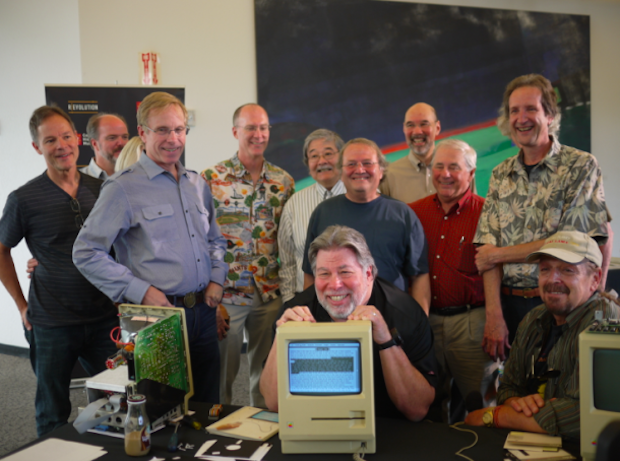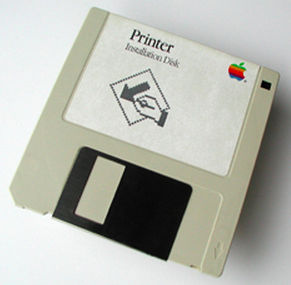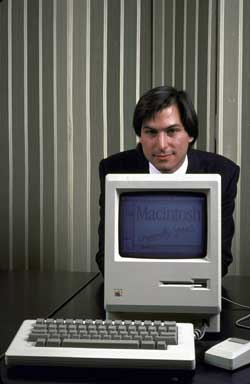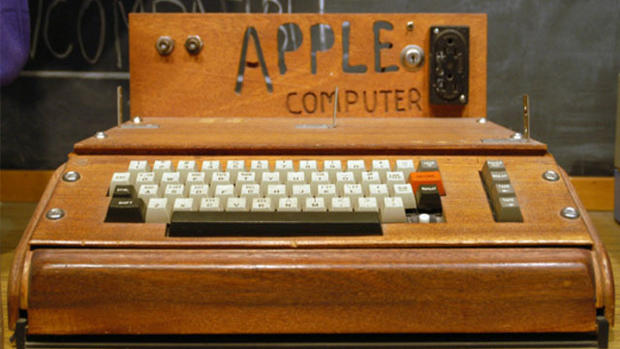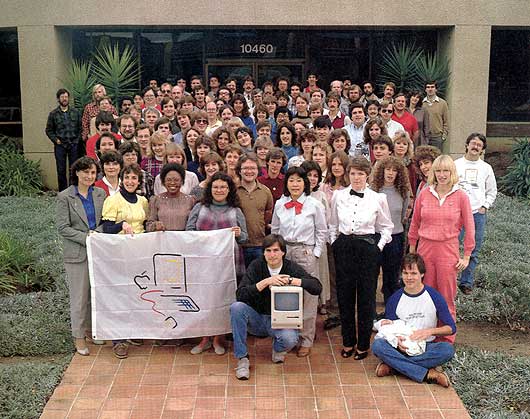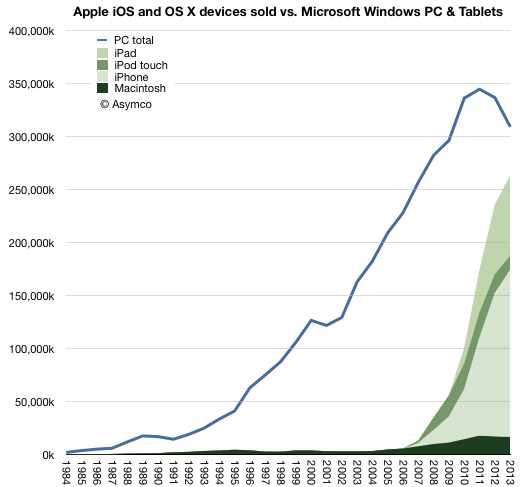The Macintosh turns 30: Going the distance
This article is part of a CNET special report on the 30th anniversary of the Macintosh, looking at the beginnings of Apple's landmark machine and its impact over the last three decades. Read the original story at CNET.
The date was set for January 24, 1984, two days after the Ridley Scott-directed TV commercial introducing the idea of the Macintosh would appear during the Super Bowl between the Washington Redskins and the Los Angeles Raiders. Steve Jobs would unveil what he came to call Apple's "insanely great" personal computer "for the rest of us."
The day couldn't come fast enough. While its flagship Apple II was selling well, the Apple III had flopped. What's more, few businesses were willing to pay $10,000 for Apple's Lisa, which debuted in June 1983.
It was up to the Macintosh to save Apple and, in Jobs' point of view, mankind from the clutches of IBM. In many ways, it has been mission accomplished for the Mac, which defined and powered Apple for years before the iPod, iPhone and iPad came along, and which remains, in its newest incarnations, a significant member of the family. Meanwhile, as Apple has flourished in the mainstream of personal computing, IBM has gone in other directions, its PC division long ago sold off to China's Lenovo.
But for Apple, this was no overnight success story.
Saving the world from IBM
As the launch date neared, Steve Jobs and his band of self-styled pirates still had major work to do, including convincing the sales force that they had built a product that would fly off the shelves. During a sales conference in Honolulu on October 23, 1983, Jobs previewed the now famous "1984" commercial and characterized Apple's mission as a battle with IBM for the future of computing.
"It is now 1984. It appears IBM wants it all. Apple is perceived to be the only hope to offer IBM a run for its money. Dealers initially welcoming IBM with open arms now fear an IBM dominated and controlled future. They are increasingly turning back to Apple as the only force that can ensure their future freedom. IBM wants it all and is aiming its guns on its last obstacle to industry control: Apple. Will Big Blue dominate the entire computer industry? The entire information age? Was George Orwell right about 1984?"
Jobs also talked up third-party software developer support at the sales meeting, featuring a "dating game" skit, playing off the popular TV game show. Jobs played the role of game show host, and Microsoft's Bill Gates, Software Publishing's Fred Gibbons and Lotus Development's Mitch Kapor answered questions, such as "When was your first date with the Macintosh" and "What is your ideal relationship with Apple?" Gates predicted that Microsoft would get half its revenues from Macintosh software sales in 1984.
Real artists ship
As Jobs was revving up the sales team, Apple engineers were racing against the clock to finalize the floppy-disk drive and finish the system software and the MacWrite and MacPaint applications. In addition, tooling engineers were fine-tuning the production line of the $20 million factory in Fremont, Calif., which was built to crank out a Macintosh every 27 seconds.
Up until the summer of 1983, the Macintosh was going to use the same 5.25-inch floppy-disk drive as the Lisa. But the so-called "Twiggy" drive, allegedly named after the famous and very thin 1960s fashion model, proved to be error-prone and unreliable. The Lisa could live with the flaky drive -- it also had a 5MB hard disk -- but the Macintosh was doomed to an indefinite delay unless a solution was found.
In August, Apple set its sights on a new, micro-floppy 3.5-inch disk drive with 400KB capacity from Sony. At first Jobs wanted Apple to manufacture the drive, working with Alps Electronics in Japan. He eventually relented and went with the Sony when it turned out that Alps would need 18 months to deliver a new drive.
Jobs also wanted to have an external 400K Sony disk drive ready for launch. With the lack of a hard drive, users could end up swapping disks for several minutes. Steve Capps, who helped develop the file manager (the Finder), explained the problem on Macintosh software wizard Andy Hertzfeld's Folklore.org Macintosh history site:
A typical application on a 128K Mac had about 85K of memory available; the rest was used by the system, mostly for the bitmap display. A simple calculation shows that copying a 400K disk should involve about 5 or 6 swaps. Five disk swaps was barely tolerable, but, as early Finder users will remember, occasionally it would take well over 20 disk swaps.
A $495 external disk drive was introduced with the Macintosh on January 24, but it didn't ship until the beginning of May.
As the factory was gearing to build thousands of Macintoshes for the launch date, the two halves of the plastic case housing the computer weren't fitting together.
"The plastic parts had to be coated on the inside with conductive paint to maintain a shield around the computer to pass FCC testing requirements. Vendors sprayed on the paint, but when the parts arrived at the factory they couldn't fit the halves together," said Jerry Manock, who designed the Macintosh's housing. "We had a quick conference and then went to Laszlo Zidek's [an Apple tooling engineer] house, where we built an arbor press fixture in his basement. It had a big lever that would very accurately push one side into the other side. We took it to factory and put it on the line, and it worked. This working together in an informal way was the the key to the success of the product. It was more like one mind putting together the product than separate departments."
The entire Macintosh software team was working around the clock to find and fix bugs as the new year began. As the deadline closed in, they were running on fumes, and feeling like they could not meet the deadline to deliver the finished code.
"Steve was in New York on a public relations junket two weeks before the code freeze," said Capps, who was working to finish the Finder, along with Bruce Horn. "We had a meeting with him at 9 a.m. on a Saturday, a few weeks before the launch. He was late, and while we were waiting I had convinced the group in Cupertino that we were killing each other for the wrong reason. We were all fried. I did a calculation that we could FedEx the disks to the first buyers and not kill ourselves to get the disks done in time for the factory to duplicate and package them. Steve came on the speakerphone with his amazing powers of persuasion, and we went back to work. The disks would be in the box. Later on Steve told me that if he took the pressure off the group, we would have lost momentum for a month. He was right."
It was all part of Jobs' creed that "real artists ship."
The effort to finalize the software came down to the last few hours, and didn't leave much time for testing. "On January 18 it had to go out at 6:00 o'clock in the morning, but at 2:00 o'clock in the morning none of the software worked," said Randy Wigginton, who led the development of MacWrite. "It was the worst scenario you could possibly imagine. MacPaint and MacWrite had crash bugs and you couldn't copy a disk in the Finder, and the ROM had all sorts of bugs. But we did manage to pull it off by 6:00 o'clock in the morning."
Another last-minute fire drill was writing the code for Jobs' Flint Center introduction of the Macintosh at Apple's annual shareholder meeting. "The last three days I had no sleep, and then I pulled an all-nighter getting the intro going," Capps said. "The hair on the back of my neck still stands up when I hear 'Chariots of Fire.' " The theme song from the 1981 movie of that name played as the screen lit up with the first public demonstration of the Macintosh.
1984: The commercial seen around the world
On January 22, as the second half was getting under way, the "1984" commercial aired before nearly 100 million people watching the Super Bowl. The commercial almost wasn't shown. In December, Jobs and marketing chief Mike Murray had previewed it for the board of directors. They were unanimously against airing the commercial, which cost more than $750,000 to produce, and wanted the advertising time to be sold off. The ad agency, Chiat-Day, was able to unload two 30-second spots, but didn't sell the $800,000 60-second spot. After the commercial aired, Apple's outside board members, made up of an older generation of men, turned into believers in the transformative power of the Macintosh, or at least the power of the advertising message.
"The real goal of the 1984 TV commercial was twofold," said Murray, the 27-year-old head of Macintosh marketing at that time and who later spent 10 years as a Microsoft executive. "Enter the word Macintosh into the American lexicon and create news -- not public relations, but news. We succeeded beyond all expectations with both. Regarding the latter goal, the commercial, which only showed once on TV as a commercial, was shown in its entirety on the national TV news of ABC, NBC and CBS. This was news. And we received front page coverage in the New York Times, Wall Street Journal, Fortune, Business Week, Forbes, Time and Newsweek."
The Macintosh says 'hello'
When Jobs took the stage at the Flint Center, the pump was primed (view a video the unveiling). More than 2,500 filled the auditorium, including the exhausted but giddy Mac team. More than 40 television crews had their cameras pointed as Jobs, dressed in a dark grey blazer, white shirt and green bow tie.
The night before had been chaos. "The demo didn't work as Steve wanted it and he was having a fit. It seemed impossible we would be ready to go the next morning for the shareholder meeting," said former Apple CEO John Sculley. "Steve was terrified as we stood back stage before he went out to speak the audience."
The crowd went wild, and Jobs basked in the adulation for what he and the team had pulled off. And he was thankful that the Macintosh cooperated and the live demos didn't crash. He was fortunate that Brian Howard, Apple employee No. 32, insisted on adding extra memory address lines to final logic boards, so that another 384K of memory could easily be added to the machine. In effect, Jobs demonstrated the 512K Macintosh, configured with pre-release 64K memory chips.
"Steve's introduction of Macintosh in 1984 was a magical moment," said Guy Kawasaki, one of the original Macintosh software evangelists. "The earth shifted on its axis a little that day. Steve took it out of its bag, and the Macintosh 'talked' for itself. For many of us who had not had children yet, it was the closest thing to having a baby."
In a promotional video taped prior to the introduction, Jobs articulated the risk he was taking with Apple's future survival, and his attitude toward the competition:
"If the Macintosh isn't an incredible success, what it means is that our vision of what people want to use computers for is wrong. So, we're gambling on our vision. We would rather do that than make me-too products . Let some other companies do that. For us, it's always the next dream."
Disappointing Macintosh sales
Jobs and his band of pirates didn't save the world from the IBM PC clones and Microsoft's MS-DOS operating system (it took another 23 years to deliver the iPhone that set the computing world on a new path), but they managed to change the face of personal computing by popularizing the graphical user interface and mouse.
Sixteen months later Jobs would be ousted by the board of directors from the company he co-founded, and many of the original Mac team would move on. Macintosh sales got off to a good start, selling more than 70,000 by the end of April 1984. In September, the 512K Macintosh was introduced, quadrupling the amount of memory, and more applications started shipping.
"We enlisted 24 major higher education institutions to implement and deploy Macintoshes to students and to engage faculty to design curricula for the Macintosh," Lewin said. Each member was expected to purchase more than $2 million of Apple products, at discounted prices, over the next three years for use by faculty and students.
But sales began to slow at the end of the first year, despite some significant sales into universities. Less than 10,000 Macintoshes were sold in December. The computer as a kind of Cuisinart appliance for the masses would take a few more decades to realize.
"I think the Macintosh got the public imagination, but it didn't translate to the sales that Apple expected. That's at the root of why Steve Jobs had his responsibilities for the Mac reduced and taken away. Because he felt like the Mac was great, and it was the marketing that was the problem," said Larry Tesler, who headed up Lisa applications and set up rigorous user testing as the Macintosh developed.
"We were spending time and money marketing the Apple II and the Lisa, and these were a waste of time. They agreed about the Lisa, but they didn't agree about the Apple II," he added. "The idea that they would take money away from Apple II marketing, which was a very high-margin cash cow, and give it to the Mac, which was paltry in terms of sales, relative to the Apple II in those days, just seemed like a very bad business decision. Steve felt that you need to kill your own old products in order to get people to use the new ones. The more conservative management just didn't want to do that."
In addition, only a small number of applications were available at launch. "We were asking developers to bet their companies on a computer that had no installed base, no tools, and no brand awareness. We used fervor and zeal, but never money, to make this happen. Getting people to start Mac development wasn't that hard. Getting them to finish was another story because the tools were sparse back then," Kawasaki said.
Saved by desktop publishing
The Macintosh gradually got past its reputation as an underpowered toy without sufficient applications and burdened by a complex disk swapping process for storage.
In March 1985 Apple tapped into a rich business niche for the Macintosh that fully unleashed its growing capabilities. The combination of the Macintosh graphical interface, Apple's LaserWriter, AppleTalk networking and Aldus' Pagemaker software ushered in the desktop publishing revolution.
A $7,000 printer with 128K Mac didn't make sense in short term, but it was sheer genius in the long term," said John Scull, who led the effort at Apple to make a business out of the LaserWriter. By 1988 desktop publishing was a $1 billion business for Apple.
In a 1995 interview with the Smithsonian, Jobs reflected on Apple's success in desktop publishing.
"From almost the beginning at Apple we were, for some incredibly lucky reason, fortunate enough to be at the right place at the right time. The contributions we tried to make embodied values not only of technical excellence and innovation--which I think we did our share of--but innovation of a more humanistic kind. The things I'm most proud about at Apple is where the technical and the humanistic came together, as it did in publishing for example. The Macintosh basically revolutionized publishing and printing. The typographic artistry coupled with the technical understanding and excellence to implement that electronically--those two things came together and empowered people to use the computer without having to understand arcane computer commands. It was the combination of those two things that I'm the most proud of. It happened on the Apple II and it happened on the Lisa, although there were other problems with the Lisa that caused it to be a market failure; and then it happened again big time on the Macintosh."
The Macintosh legacy
In its 30 years, the Macintosh has had its ups and downs, but it has aged well and maintains its reputation as the BMW of computers. Prior to the iPhone and iPad, the Macintosh accounted for the majority of Apple's revenue. Now it's less than 15 percent. Nonetheless, Apple generates nearly half of the profits in PC sales, despite having only about 10 percent market share in the U.S.
"My personal view is that the Mac revolutionized computing for the masses," Murray said. "Microsoft was forced to make Windows a thousand times better. Handheld devices and tablets borrow liberally from the original concepts of drop down windows, graphical user interface and a pointing device. Xerox PARC invented most of this, but it took Steve Jobs to commercialize it at a price point that could work for millions of people. Perhaps the real lasting impact of the Mac is that it put Steve Jobs on the map. And, it allowed him to come back to save Apple. It was his first act, but perhaps it was his most innovative act."'
The Macintosh did put Steve Jobs on the map, but it wasn't until a wiser and more experienced Jobs returned to the company in 1997 that Apple found its groove again. That groove could be described as "going the distance." In an interview just after the Macintosh was unveiled, Jobs said:
"If you read the Apple's first brochure, the headline was "Simplicity is the Ultimate Sophistication." What we meant by that was that when you first attack a problem it seems really simple because you don't understand it. Then when you start to really understand it, you come up with these very complicated solutions because it's really hairy. Most people stop there. But a few people keep burning the midnight oil and finally understand the underlying principles of the problem and come up with an elegantly simple solution for it. But very few people go the distance to get there."
Thirty years after the Macintosh was born, Apple is still trying to keep it simple and go the distance.

